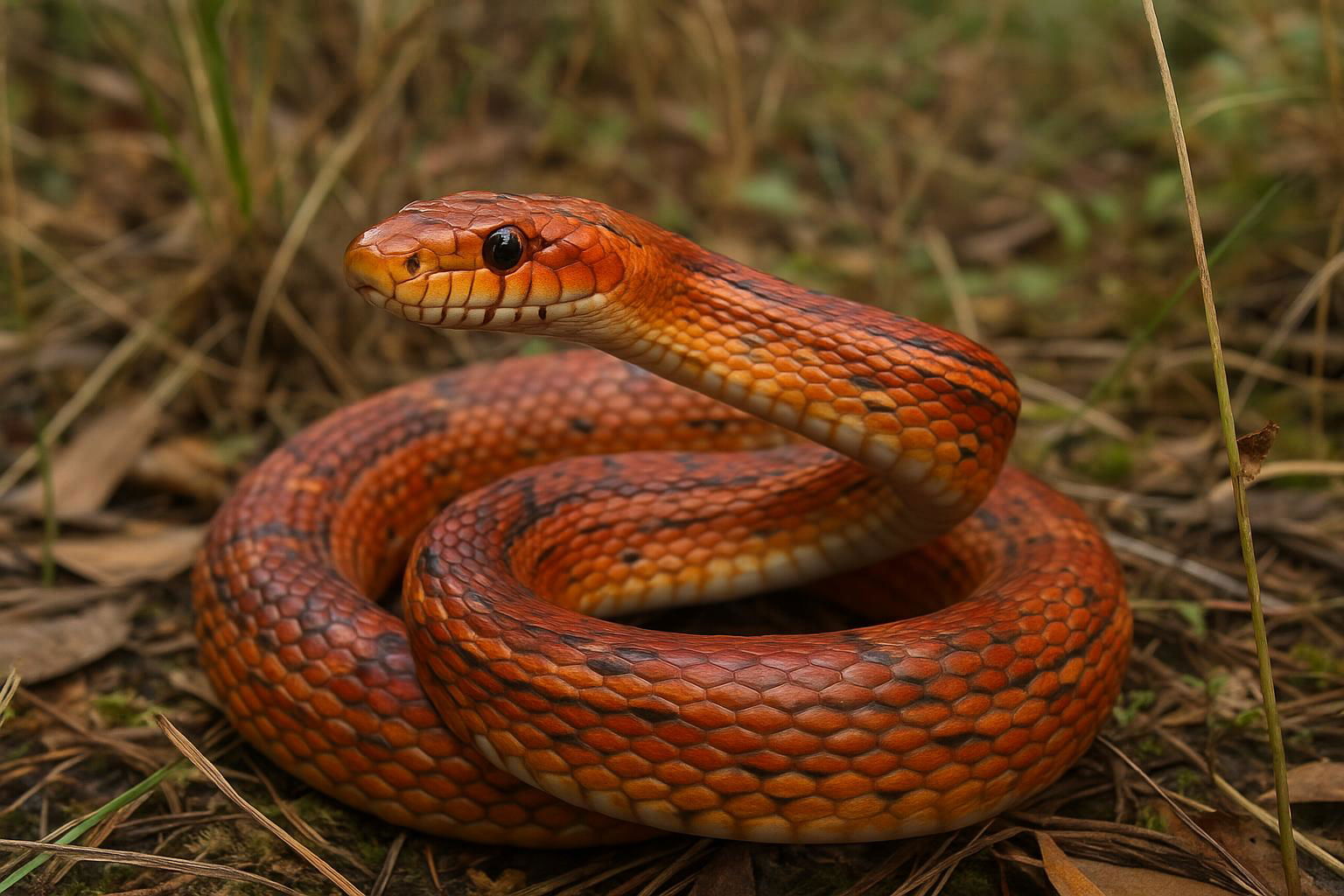
Corn Snake
Pantherophis guttatus
The Corn Snake, scientifically known as Pantherophis guttatus, is a North American species of rat snake that is widely popular for its docile nature and striking appearance. Typically ranging from 3 to 5 feet in length, these snakes possess slender, muscular bodies adorned with vivid patterns that vary from orange to brownish-red, with distinctive black-bordered saddle markings down their backs. Corn Snakes are known for their calm demeanor, making them a favorite among reptile enthusiasts and an excellent choice for beginners in snake keeping.
They inhabit a diverse range of environments, including forests, grasslands, and agricultural fields, where they often dwell near the edges of wooded areas or within abandoned buildings and barns. This adaptability is reflected in their name, which is reputedly derived from their frequent presence in cornfields where they help control pest populations by preying on rodents. These constrictors employ a method of subduing their prey by coiling around it and exerting pressure, ensuring a quick and humane capture.
Corn Snakes are primarily nocturnal and exhibit crepuscular activity patterns, being most active during dawn and dusk. They rely heavily on their well-developed sense of smell and heat-sensing pits to locate prey. In the wild, their diet mainly consists of small mammals and birds, but in captivity, they readily accept appropriately sized mice and rats. Notably, Corn Snakes exhibit various color morphs due to selective breeding, displaying an impressive array of patterns and coloration that adds to their popularity in the exotic pet trade. With a lifespan of approximately 10 to 15 years, these hardy and adaptable snakes continue to captivate both scientists and hobbyists alike.

 All Species & Breeds
All Species & Breeds
 Highland Cattle
Highland Cattle
 Miniature Donkeys
Miniature Donkeys
 All Species Directory
All Species Directory
 Highland Cattle in Virginia
Highland Cattle in Virginia
 Miniature Donkeys in Texas
Miniature Donkeys in Texas












